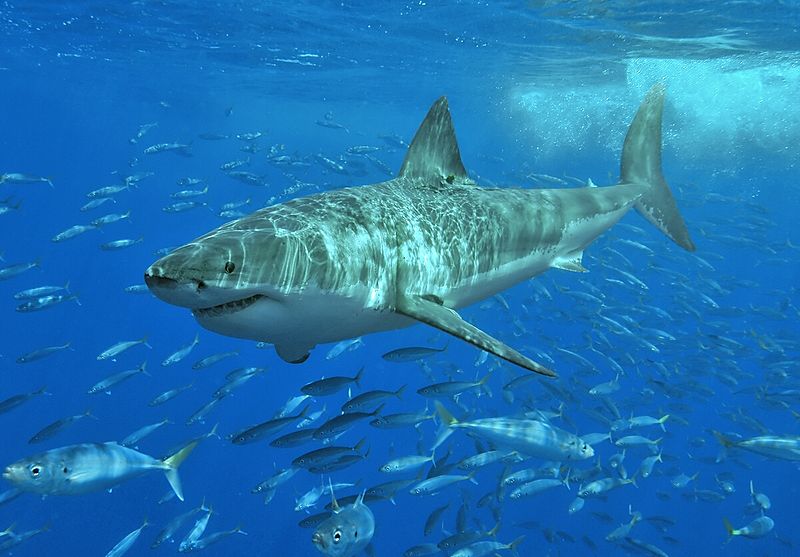We're open daily! View holiday hours
Science News
Shark Oil Storage
August 6, 2013
by Alyssa Keimach

Studies of bears and sea lions have enabled us to understand how these mammals reserve energy in the form of fat and blubber, sustaining them through winter or allowing them to travel great distances. And they aren’t alone in facing such physical challenges. Great white sharks also need a way to store energy during their long migrations, but until recently, their specific mechanism was unknown. (Maybe no one wanted to get too close to them…)
Great white sharks migrate between foraging and reproductive areas, traveling over 2,500 miles annually. While they are not known to be picky eaters, there is little food available far out in the Pacific Ocean.
Researchers at Stanford University and the Monterey Bay Aquarium studied how great whites could accomplish such a journey while fasting. But again, because great whites are, shall we say, just a wee bit dangerous, scientists needed to find ways to study the sharks’ lives without risking their own.
“The most difficult thing about this research was finding a way to bring all of the different sources of data together into a coherent and robust story,” said Gen Del Raye, a Stanford undergraduate who initiated the project. He knew that if they succeeded, they might shed light on storage strategies for other ocean mammals.
First the team studied a (well-fed) great white shark living at the Monterey Bay Aquarium. Over time the shark gained mass (but still maintained its flattering, streamline figure) and simultaneously increased in buoyancy.
Next the researchers pulled data from shark archival tags. Shark location information is time-stamped, enabling researchers to focus on one specific behavior, “drift-diving.” Huge marine animals sometimes act like hang gliders—they relax their fins while currents and momentum carry them forward. Drift-diving data provided the final clue to the research team: they established that migrating sharks lost buoyancy over time.
By measuring the rate at which sharks sink during drift dives, the researchers were able to estimate the amount of oil in the animals’ livers, which accounts for up to a quarter of their body weight. Sharks store oil before migration (making them float) then gradually use that energy throughout their journey (making them sink).
“Sharks face an interesting dilemma,” said Sal Jorgensen, a research scientist at the Monterey Bay Aquarium. “They carry a huge store of energy in the form of oil in their massive livers, but they also depend on that volume of oil for buoyancy. So, if they draw on those reserves, they become heavier and heavier.”
The new research paper might not only be used to help solve mysteries about other marine animals, but can also be used to assist conservation efforts around coastal feeding grounds.
“We have a glimpse now of how white sharks come in from nutrient-poor areas offshore, feed where elephant seal populations are expanding—much like going to an Outback Steakhouse—and store the energy in their livers so they can move offshore again,” said researcher Barbara Block, a professor of marine sciences and a senior fellow at the Stanford Woods Institute for the Environment. “It helps us understand how important their near-shore habitats are as fueling stations for their entire life history.”
Alyssa Keimach is an astronomy and astrophysics student at the University of Michigan and interns for the Morrison Planetarium.
Image: Pterantula (Terry Goss)/Wikipedia